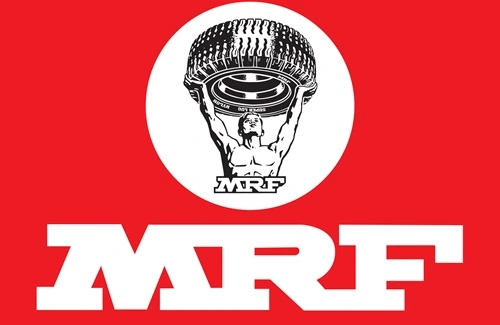MRF Tyres, officially known as Madras Rubber Factory, is India’s largest tyre manufacturer and one of the most prominent players in the global tyre industry. Established in 1946 and headquartered in Chennai, MRF has expanded its operations to multiple countries, serving both domestic and international markets. The company has maintained its leadership position in India while facing intense competition globally. This SWOT analysis provides a comprehensive look at MRF Tyres’ strengths, weaknesses, opportunities, and threats for 2024.

MRF Tyres Overview:
MRF has consistently delivered robust financial performance. In FY23, the company generated ₹23,009 crore in revenue with a net profit of ₹769 crore. While the company’s profits have seen fluctuations due to volatile raw material costs, MRF remains financially strong with a healthy debt-to-equity ratio of 0.17. The company has diversified its product range beyond tyres, venturing into sectors such as paints and coatings under MRF Corp, and promoting motorsports with the MRF Racing division.
Strengths:
1. Market Leadership: MRF Tyres is the largest tyre manufacturer in India and has a strong foothold in various international markets. The company enjoys significant brand loyalty and consumer trust due to its consistent quality and innovation.
2. Diverse Product Portfolio: MRF produces tyres for a wide variety of vehicles, including passenger cars, commercial vehicles, two-wheelers, and agricultural vehicles. This broad portfolio allows MRF to cater to different segments, reducing the risks associated with a single product line.
3. Strong Distribution Network: With a well-established distribution network in India and a presence in over 65 countries, MRF has positioned itself to reach a broad customer base. This extensive network helps the company maintain its competitive edge in the market.
4. Financial Stability: Despite the challenges posed by rising raw material costs, MRF’s financial performance remains solid. The company has a good interest coverage ratio and maintains low debt levels, which provides it with the financial flexibility to invest in future growth.
Weaknesses:
1. High Dependence on Raw Materials: MRF is highly dependent on natural rubber and crude oil, both of which are subject to significant price volatility. Fluctuating raw material prices can erode profit margins, making it difficult for MRF to maintain consistent profitability.
2. Lack of Geographic Diversification in Manufacturing: The majority of MRF’s manufacturing plants are located in southern India. This geographic concentration increases the company’s vulnerability to regional disruptions, such as strikes or natural disasters.
3. Intense Competition: MRF faces tough competition from both domestic players like Apollo Tyres, CEAT, and JK Tyres, as well as international brands entering the Indian market. This competition, coupled with the availability of cheaper Chinese imports, puts pressure on MRF’s market share.
Opportunities:
1. Growing Automotive Industry: The Indian automotive industry is poised for rapid growth, driven by rising disposable incomes, increasing vehicle ownership, and strong demand for electric vehicles (EVs). MRF has the opportunity to capitalize on this trend by expanding its product offerings for electric and luxury vehicles.
2. Partnerships with OEMs: MRF has a strategic opportunity to strengthen its relationships with original equipment manufacturers (OEMs). Collaborating with automobile manufacturers can help MRF secure large orders and improve its market penetration.
3. Global Expansion: As global demand for tyres grows, especially in emerging markets, MRF has the potential to increase its presence internationally. Further investments in global marketing and distribution could enhance MRF’s export revenues.
4. Digital Transformation: With increasing reliance on e-commerce and digital platforms, MRF can further leverage digital marketing and sales channels to engage with consumers and expand its reach, especially among younger, tech-savvy customers.
Threats:
1. Rising Raw Material Costs: The increasing cost of raw materials like rubber and oil continues to be a significant threat to MRF’s profitability. Any further increase in prices may force the company to raise product prices, potentially affecting demand.
2. Stringent Environmental Regulations: Governments worldwide are enforcing stricter environmental regulations concerning carbon emissions and waste management. MRF needs to adapt to these changes by investing in sustainable production practices, which could increase operational costs.
3. Competition from Low-Cost Imports: The influx of low-cost Chinese tyres into the Indian market presents a major threat to MRF’s dominance. These cheaper alternatives may lure cost-conscious consumers, especially in price-sensitive segments.
4. Technological Disruptions: Advances in technology and materials, such as the development of non-pneumatic tyres, could disrupt traditional tyre manufacturing. MRF needs to stay ahead by investing in R&D to remain competitive.
Conclusion:
MRF Tyres remains a dominant force in the tyre industry with strong brand equity, an extensive product range, and a robust financial position. However, the company must navigate challenges such as rising input costs and increasing competition from both domestic and international players. By capitalizing on opportunities in the growing automotive market, strengthening partnerships with OEMs, and expanding its digital presence, MRF can solidify its leadership position. Nevertheless, the company needs to remain vigilant about external threats, particularly in terms of regulatory changes and technological disruptions. A proactive approach to innovation and sustainability will be key to ensuring long-term success.